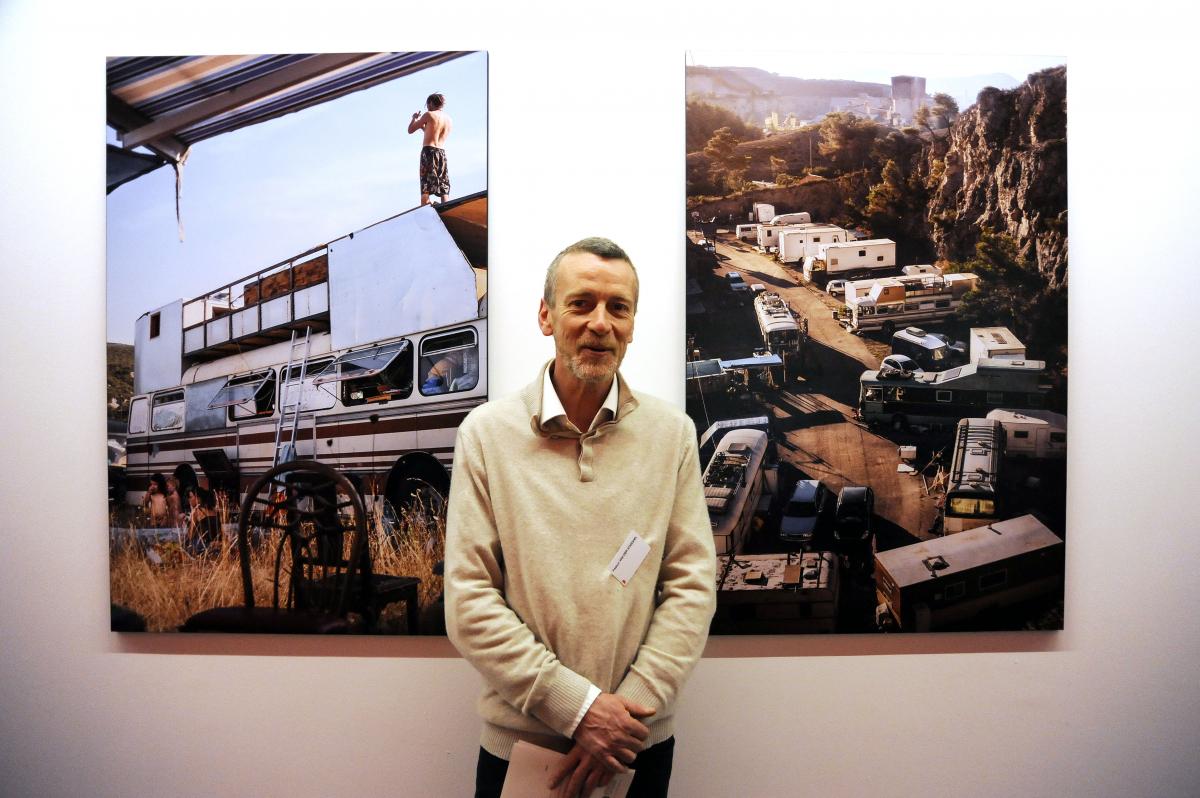
This Meeting saught to question the image of peri-urban areas as unlivable unbearable and without qualities or urbanness. Researchers, professionals and artists defended their views of the different lifestyles these areas give birth to and potential they offer in terms of sustainable mobility. The audience was invited to actively participate in the discussion.
You can now watch (again) the two days of the Meetings – or thirty videos displaying the speeches, discussions and debates which occured between practitioners, researchers and artists from the entire world, questioning the conventional wisdom about peri-urban areas.
Which lifestyles in the alter-urbain
suburban-rural / citta diffusa / Zwischenstadt ?
Urban sprawl has been repeatedly criticized. Unlike compact cities – those hubs of European urban civilization that continue to be extolled by proponents of sustainable development, as they are allegedly more energy efficient - peri-urban areas are seemingly places of dispersion and ravenous consumers of energy, nature and farmlands. A built space lacking qualities of architecture and urban planning, bereft of veritable urbanity and amenities, the peri-urban is seen as a refuge for the modest middle classes that have been chased from the city by real estate prices, a place of weak, labile social ties where “self-segregation” thrives. It is also considered space of apolitical impotence reinforced by communal fragmentation and electoral volatility. A space created by the car, for the car, where the use of public transportation is not suited. Such arguments regarding peri-urban areas are regularly taken up by the media and certain renowned architects.
Today, researchers seem to be challenging this view by hypothesizing that this space is in fact much more complex and diverse, giving rise to a number of concepts to better grasp it: alter-urban, suburban, rings, périurbain, péri-urbain, citta diffusa, Zwischenstadt, etc. This could be another way for modern societies to spatialize themselves, not necessarily in conflict with compact cities but in coexistence and complementarity. This space would appear less harmful than they make it out to be. Maybe it could even become a place of scalability to the economic, energy and environmental crises of the 21 st century—in some ways a sustainable alternative to the urban.
We would like to explore this hypothesis in terms of mobilities by comparing the perspectives of researchers, artists, elected officials and transportation professionals. On what mobilities is peri-urban life today established? Can we envisage “good, sustainable lives” in these spaces, in light of energy, environmental and economic challenges? Does the notion of peri-urban will also still make sense? Should we use a different term?
This is what we intend to explore over these two days.
Gérald Billard and Arnaud Brennetot (Université de Rouen)
.
.
Anaïs Lefranc-Morin (Université Paris 1 Panthéon-Sorbonne)
.
.
James Whiting (University of Sunderland)
.
.
Martin Schuler (Ecole Polytechnique Fédérale de Lausanne)
.
.
- Annie Fourcaut (Université Paris 1 Panthéon-Sorbonne)
- Emmanuel Roux (Université Joseph Fourier Grenoble 1)
- Paola Pucci (Politecnico di Milano)
- Thomas Sieverts (Europan)
- Martin Schuler (Ecole Polytechnique Fédérale de Lausanne)
Moderator: Jean-Pierre Orfeuil (Institut d’Urbanisme de Paris)
Benoit Conti (Université Paris-Est)
.
.
Claire Aragau (Université Paris Ouest) and Martine Berger (Université Paris 1 Panthéon- Sorbonne)
.
.
Rodophe Dodier (Université d'Aix-Marseille)
.
.
.
.
Moderator: Francis Beaucire (Université Paris 1 Panthéon-Sorbonne)
Alix Cariou and Jean Teiller (Institut d’Aménagement et d’Urbanisme Ile-de-France)
.
.
Patricia Sajous (Université du Havre)
.
.
Paula Negron-Poblete (Université de Montréal)
.
.
.
.
Moderator: Francis Beaucire (Université Paris 1 Panthéon-Sorbonne)
Leslie Belton-Chevallier ( Institut français des sciences et technologies des transports, de l’aménagement et des réseaux ) and Yves Jouffe ( Ecole Nationale des Ponts et Chaussées )
.
.
Mireille Bouleau and Lucile Mettetal ( Institut d’Aménagement et d’Urbanisme Ile-de-France )
.
.
Innocent Chirisa ( University of Zimbabwe )
.
.
.
.
Irène Aristizabal, curator
.
Extract of "Edgeland" (2013) Justin Benett
.
Extract of Autotrophie (2013) - Ariane Michel
.
depuischeztoi, relax - Ivan Argote
.
La Transhumance fantastique - Nicolas Boone
Yves Pedrazzini ( Ecole Polytechnique Fédérale de Lausanne ) and Ferjeux Van der Stigghel

On Suburbia (2011) - Andreas Angelidakis
Hélène Nessi (Bureau de recherche 6-t)
- Jacques Lévy (Ecole Polytechnique Fédérale de Lausanne)
- Eric Charmes (Université de Lyon)
- Yves Crozet (Université de Lyon)
- Hélène Le Teno (Carbone 4)
Marc Dumont (Université de Rennes 2)
.
.
Yan le Gal (Agence d'urbanisme de Nantes)
.
.
.
.
Juliette Maulat (Université Paris 1 Panthéon-Sorbonne)
.
.
Frédéric Héran (Université de Lille 1)
.
.
Xavier Desjardins (Université Paris 1 Panthéon-Sorbonne)
.
.
Jean-Pierre Orfeuil (Institut d’Urbanisme de Paris)
.
.
- Jean-Marc Offner (Agence d'urbanisme Bordeaux métropole Aquitaine)
- Laurent Thévoz (Ecole Polytechnique Fédérale de Lausanne)
- Marie-Flore Mattei (PUCA - Ministère de l’Ecologie, du Développement Durable et de l’Energie)
For the Mobile Lives Forum, mobility is understood as the process of how individuals travel across distances in order to deploy through time and space the activities that make up their lifestyles. These travel practices are embedded in socio-technical systems, produced by transport and communication industries and techniques, and by normative discourses on these practices, with considerable social, environmental and spatial impacts.
En savoir plus xTheories
To cite this publication :
(04 July 2013), « Videos: sustainable mobilities in peri-urban areas? », Préparer la transition mobilitaire. Consulté le 11 April 2025, URL: https://forumviesmobiles.org./en/forum-meetings/1000/videos-sustainable-mobilities-peri-urban-areas
Other publications